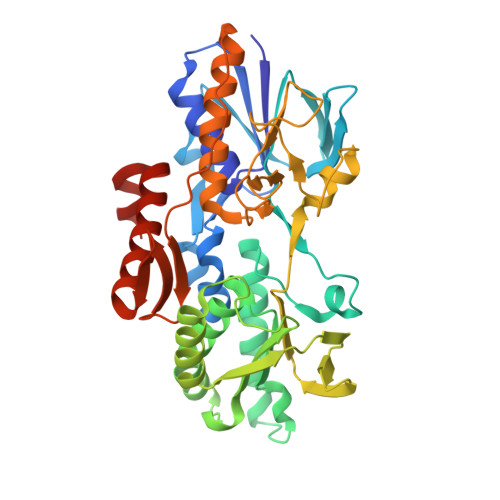Structure of the NDH-2 - HQNO inhibited complex provides molecular insight into quinone-binding site inhibitors.
Petri, J., Shimaki, Y., Jiao, W., Bridges, H.R., Russell, E.R., Parker, E.J., Aragao, D., Cook, G.M., Nakatani, Y.(2018) Biochim Biophys Acta 1859: 482-490
- PubMed: 29621505
- DOI: https://doi.org/10.1016/j.bbabio.2018.03.014
- Primary Citation of Related Structures:
6BDO - PubMed Abstract:
Type II NADH:quinone oxidoreductase (NDH-2) is a proposed drug-target of major pathogenic microorganisms such as Mycobacterium tuberculosis and Plasmodium falciparum. Many NDH-2 inhibitors have been identified, but rational drug development is impeded by the lack of information regarding their mode of action and associated inhibitor-bound NDH-2 structure. We have determined the crystal structure of NDH-2 complexed with a quinolone inhibitor 2-heptyl-4-hydroxyquinoline-N-oxide (HQNO). HQNO is nested into the slot-shaped tunnel of the Q-site, in which the quinone-head group is clamped by Q317 and I379 residues, and hydrogen-bonds to FAD. The interaction of HQNO with bacterial NDH-2 is very similar to the native substrate ubiquinone (UQ 1 ) interactions in the yeast Ndi1-UQ 1 complex structure, suggesting a conserved mechanism for quinone binding. Further, the structural analysis provided insight how modifications of quinolone scaffolds improve potency (e.g. quinolinyl pyrimidine derivatives) and suggests unexplored target space for the rational design of new NDH-2 inhibitors.
Organizational Affiliation:
Department of Microbiology and Immunology, University of Otago, Dunedin 9054, New Zealand.
















